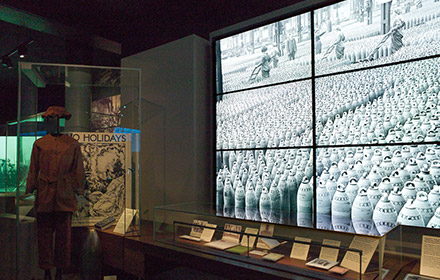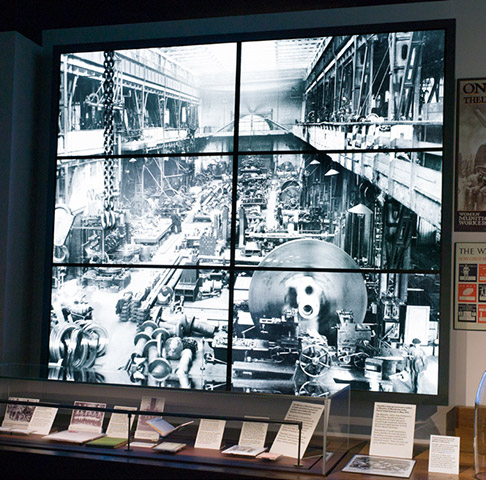NEC Display Solutions Client Installation Museums & Leisure
IMPERIAL WAR MUSEUM
TELLING A STORY THROUGH THE EYES OF THOSE WHO LIVED AND DIED
To mark the Centenary of the First World War, the Imperial War Museum in London opened a new, permanent First World War Gallery. Using audio visual equipment, the exhibit seeks to tell the story through the eyes of those who lived and died during the Great War and to engage with visitors who may have no knowledge of war.
The Imperial War Museum, London, reopened its doors after a £40 million transformation that began in 2010 and completely remodelled the interior to create four gallery floors around a central open atrium capable of displaying large war machines including aircraft and tanks. Its role is to continue the task it was first set when first opened in 1917; to ensure that future generations understood the toil and sacrifice of individuals and the impact that war has on the world in which we live.
On the centenary of the First World War, the museum has created a new permanent gallery dedicated to this conflict. It includes over 1300 objects from the very small to the very large, encompassing weapons, uniforms and personal items. In a generation in which many no longer have relatives who were alive during fighting, the museum explains not just the war, but the effect it had on people both before and afterwards.

“The intention is to bring alive the thoughts of people at the time; from recollections, letters, diaries, all the evidence we have of how people thought about the war in the period before they knew how it would end,” says Laura Clouting, curator at the IWM.
The Challenge
The museum has incorporated new and relevant ways to engage modern audiences. “Visitors can find specific information in over 60 audiovisual displays and hands-on interactive exhibits, that illuminate, pace and punctuate the story,” explains James Taylor, lead curator at the museum. “We felt it crucial that visitors should see the conflict through the eyes of those who lived and died during the First World War.”
A great deal of that information and experience is conveyed through the use of visual display screens and audio soundscapes. The IWM has one of the oldest and most extensive film libraries in the world. Footage is used to recreate the sights and sounds of soldiers, munitions factory workers and ordinary civilians throughout several themed zones.
The NEC Solution

A wide range of screens are used, according to the effect and evidence each display was designed to convey, complementing the exhibits rather than taking over for theatrical effect.“With such a wide range of visual material to hand it was possible to incorporate small visual displays amongst the artefacts to explain their context as well as large videowalls and projected images to fully immerse visitors,” says Hugo Roche, managing director of integrator Sysco. “Individual devices were selected to suit the requirements of each application, be it a projector, single large screen display or multiple videowall as backdrops in the zones.”
Selection of equipment was made through offsite testing with NEC large format V Series professional LCD displays chosen to create impact in the Total War zone. The 65” display, with protection glass, shows footage from the five month-long Battle of the Somme that marked a pivotal point in the war. The high quality Conturan® glass ensures reduced reflection and high light transmission for an unrestricted view of display content. NEC X-series ultra-narrow bezel displays are used to create a 3 x 2 video wall, providing a through-window view of food and munitions factories in Feeding the Front zone. With just 5.7 mm bezel (content to content), this solution creates an impactful high resolution digital canvas.
The Result
The four year renovation project has resulted in a unique experience that respects and treats war in a sensitive manner, providing, through the use of technology and creativity, a way of engaging visitors with no personal or first-hand knowledge of war and will continue to do so for decades to come.

